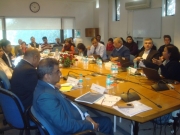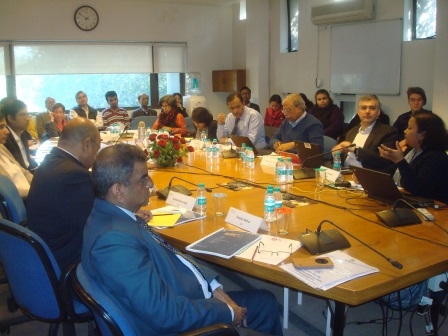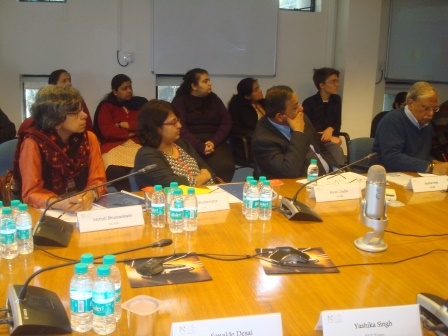NCAER’s Quarterly Review of the Economy
Quarter 3, 2015–16
The NCAER QRE team presented its quarterly review & forecast of the major macroeconomic variables based on NCAER’s modelling work. It included NCAER’s observations, reviews and projections for 2016-17 covering various sectors including agriculture; industry and services; public finance, money; credit and finance; external sector as well as the GDP forecasts. On this occasion NCAER released its widely-reported Quarterly Review of the Economy or QRE as it is popularly known.
Key Highlights
NCAER’s annual model predicts that GDP growth rate (GDP market prices at 2011–12 prices) will grow at 7.4 per cent for 2015–16 and 2016–17
NCAER’s annual model for GDP Market prices at 2011–12 prices forecasts GDP growth rate for 2016–17 at 7.4 per cent. The quarterly model suggests that Gross Value Added at Basic Prices (2011–12) will grow at 7.2 per cent for 2015–16 and 2016–17.
The prospects for agricultural sector in 2015–16 remain weak owing to poor monsoon rainfall for the second year in a row. Agricultural growth during the first half of the current financial year reduced to 2.0 per cent from 2.4 per cent growth witnessed in the first half of 2014–15. NCAER estimates, however suggest that Rabi output may perform comparable to previous year and the overall food grain output for this year may be marginally higher, approximately 1 per cent to 2 per cent.
Index of Industrial Production (IIP) contracted sharply in November 2015, with the index declining 3.2%, down from a five-year high of 9.8% in October 2015 and a growth of 3.8% in the comparable period last year. Manufacturing sector, accounting for 75 per cent of the total industry, became the biggest contributor to the fall in industrial growth with the manufacturing IIP witnessing a steep fall of (–) 4.4 per cent in November 2015. Nonetheless, the cumulative industrial growth during April–November period in FY16 (fiscal year 2015–16) stood at a decent 3.8% (Figure I.1), comfortably outpacing the growth seen during the same period for the last three years
The leading indicators of services sector present mixed signals in the first three quarters of current fiscal. Growth of tourist arrivals dipped on a y-o-y basis (5.5%) during third quarter of the current fiscal compared to growth of (6.5%) in the second quarter. The growth of banking indicators have been mixed with lower growth in aggregate deposits and higher growth in bank credit to the commercial sector. The third quarter growth of Revenue earning goods traffic by railways declined to 0.2 per cent compared to 1.5 per cent rise in earlier quarter. The growth in Cargo handled at major ports dipped and domestic aviation cargo traffic has also dipped. The domestic aviation sector picked up growth momentum in passenger segments during April–November of current fiscal.
The external sector persisted on a dismal trend during April–November 2015–16. Exports decreased by 18.1 per cent and touched US$ 196.6 billion given the subdued global demand. The steepest decline was posted by export of petroleum products (51.7 per cent) followed by ores and minerals (22.5 per cent) and agricultural products (20.5 per cent). Manufactured goods exports fell by 7.9 per cent on the whole, with transport equipment and engineering goods registering the highest decline of 17.9 and 15.6 per cent, respectively. Total imports declined by 15.9 per cent to US$ 447.5 billion, mainly on account of a 41.6 per cent fall in the value of oil imports. Non-oil imports too fell by 3.1 per cent.
Inflation rates have seen an increase over the last quarter (October –December 2015), mainly driven by the increase in food prices. The headline inflation rate calculated from the Consumer Price Index (CPI) jumped from 4.5 per cent in 2015–16:Q2 to 5.5 per cent in 2015–16:Q31. The outlook suggests that price movement would be contingent upon monsoon, global commodity prices and expectations of the households.
Fiscal Front which was 68.1 per cent of the Budget Estimate (BE) 2015-16 till September, 2015 increased to 87 per cent by November 2015 but is still well below the number (98.9) for the comparable period last year.










